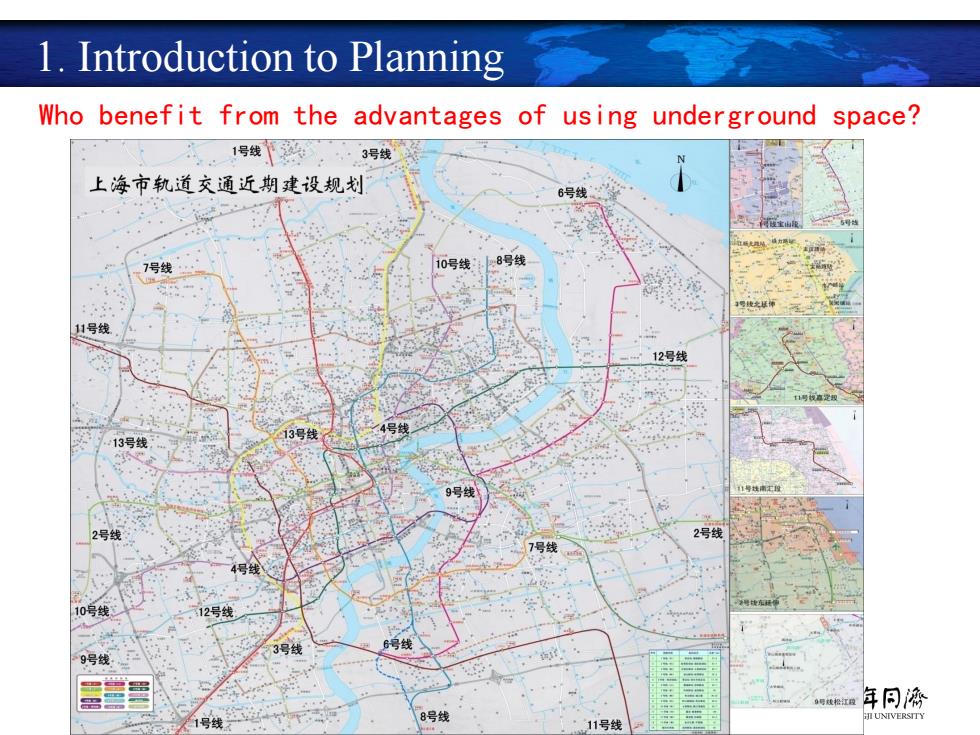
1.Introduction to Planning Who benefit from the advantages of using underground space? 1号线 ,·3号线 上海市轨道交通近期建设规划 8 7号线 0 11号线 :13号线 2号 12号结 年同濟 8号线 IUNIVERSITY 号线
12 1. Introduction to Planning Who benefit from the advantages of using underground space?
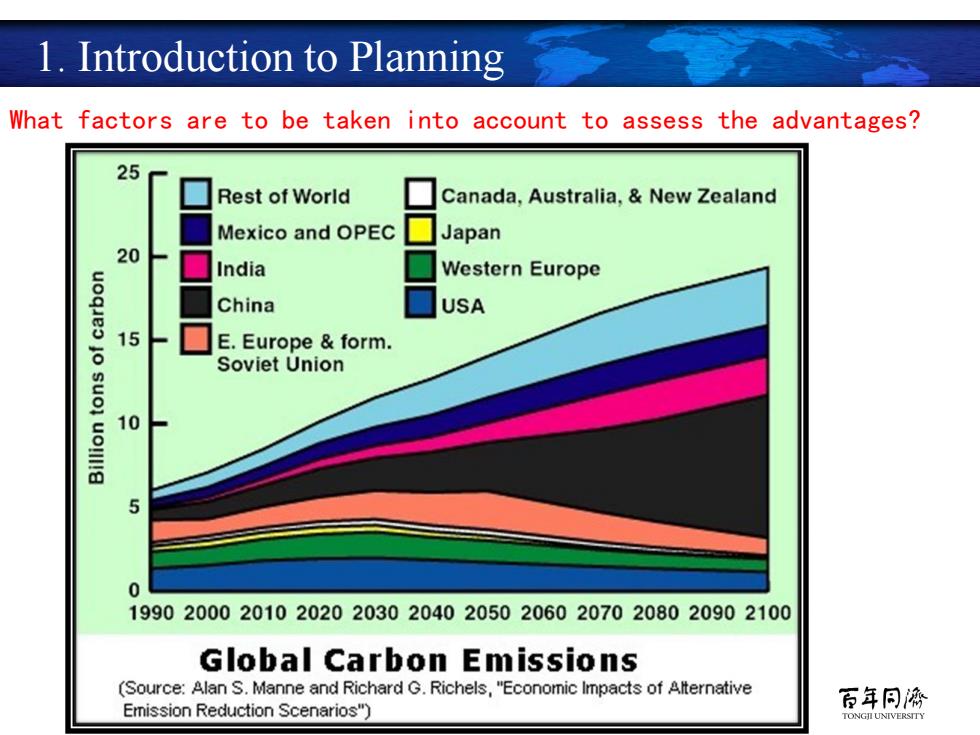
1.Introduction to Planning What factors are to be taken into account to assess the advantages? 25 Rest of World Canada,Australia,New Zealand Mexico and OPEC Japan 20 India Western Europe uoqieo China USA 15 6 ☐E.Europe&form. Soviet Union 10 5 199020002010202020302040205020602070208020902100 Global Carbon Emissions (Source:Alan S.Manne and Richard G.Richels,"Economic Impacts of Alternative Emission Reduction Scenarios") 百年同桥 TONGII UNIVERSITY
13 1. Introduction to Planning What factors are to be taken into account to assess the advantages?
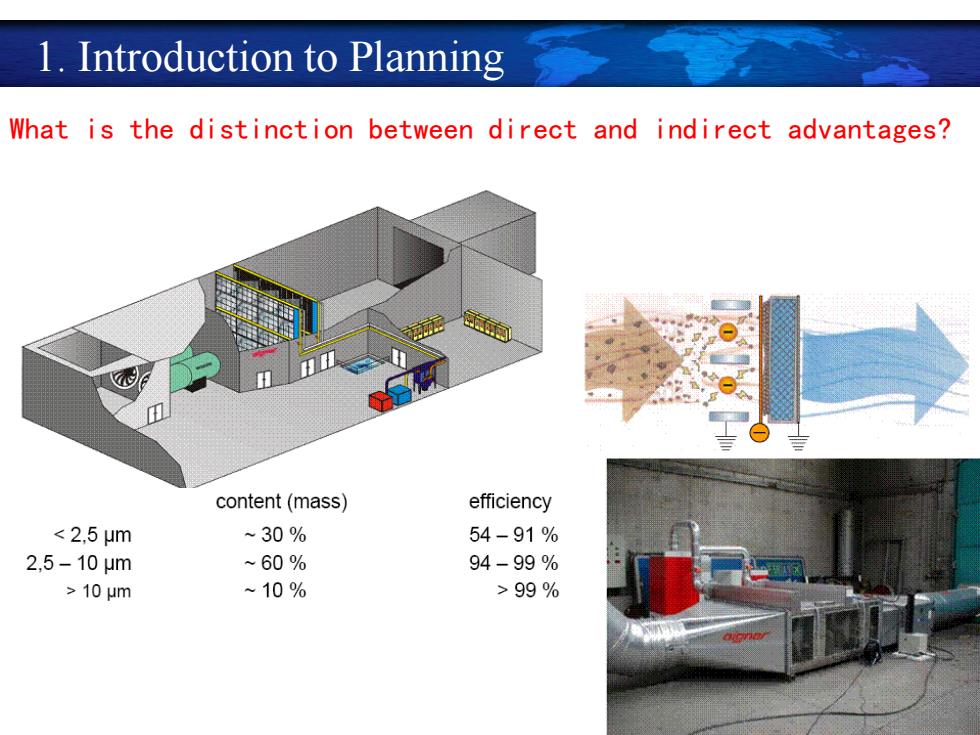
1.Introduction to Planning What is the distinction between direct and indirect advantages? content(mass) efficiency <2.5μm ~30% 54-91% 2.5-10μm ~60% 94-99% >10um ~10% >99%
14 1. Introduction to Planning What is the distinction between direct and indirect advantages?
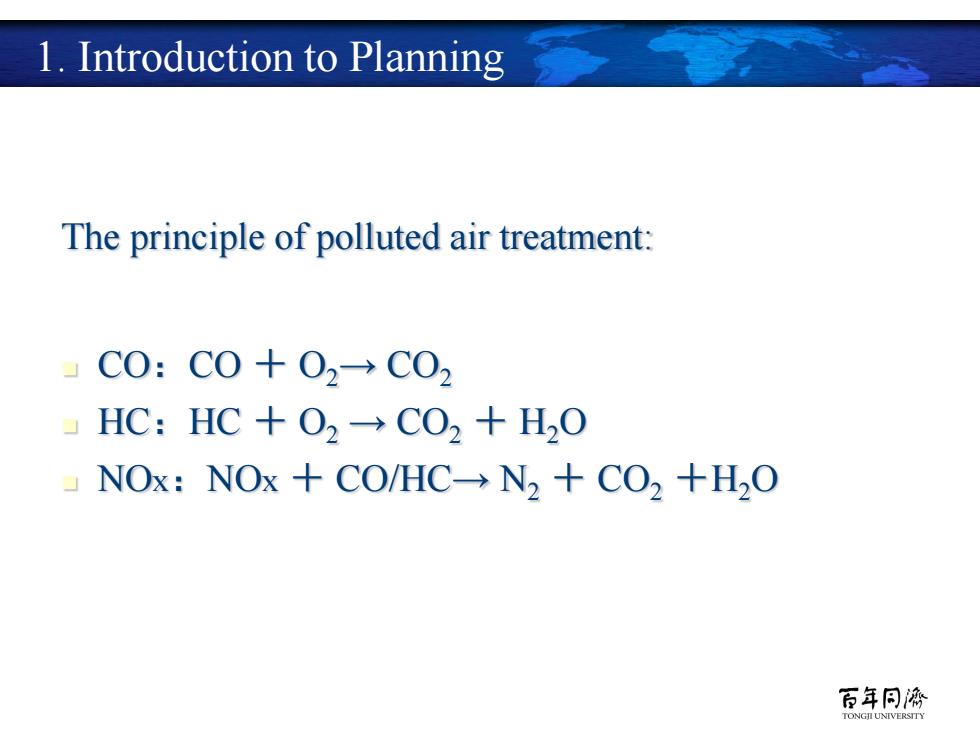
1.Introduction to Planning The principle of polluted air treatment: C0:C0+02→C02 HC:HC+O2→C02+HO NOx:NOx CO/HC-N2+CO2 +H2O 百年同濟
15 The principle of polluted air treatment: CO:CO + O2→ CO2 HC:HC + O2 → CO2 + H2O NOx:NOx + CO/HC→ N2 + CO2 +H2O 1. Introduction to Planning
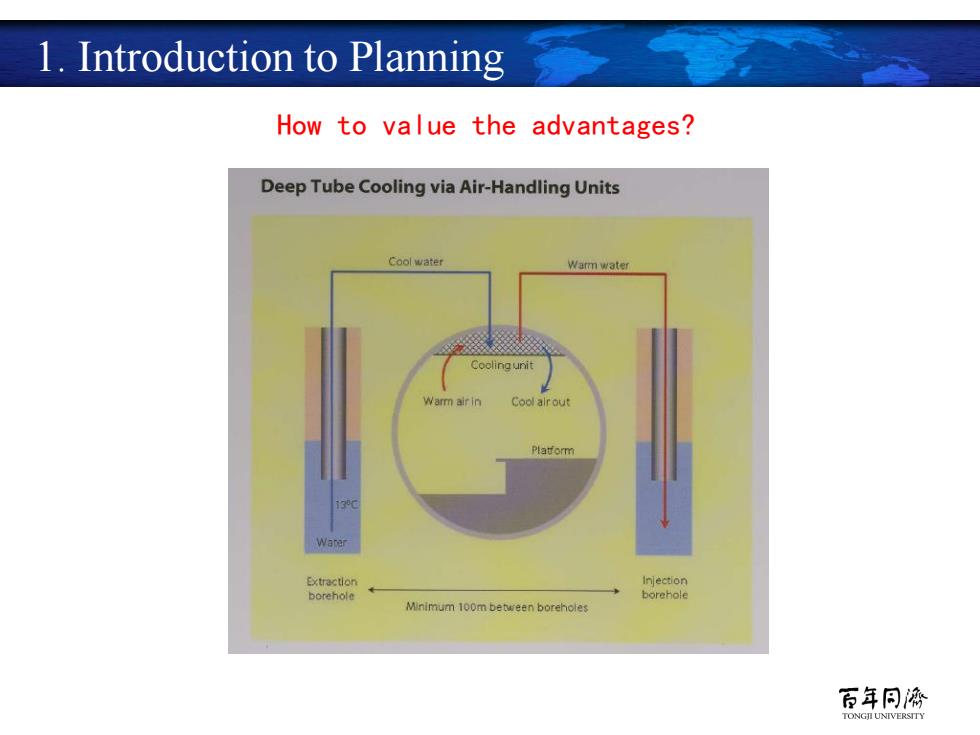
1.Introduction to Planning How to value the advantages? Deep Tube Cooling via Air-Handling Units Cool water Warm water Warm air in Cool alrout Platform Extraction Injection borehole borehole Minimum 100m between boreholes 百年同桥 TONGILUNIVERSITY
16 1. Introduction to Planning “Cooling the London tube” How to value the advantages?